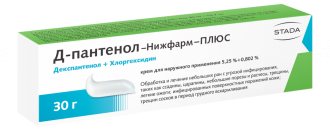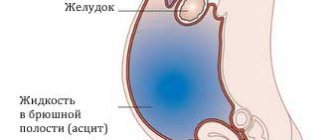An otolaryngologist, better known popularly as “Ear, Throat, Nose,” is one of the key figures in medicine. It is to him that both adults and children run to him when their throats hurt, their noses are stuffy, and they start shooting in the ears.
An otolaryngologist helps not only with acute ENT diseases - tonsillitis, pharyngitis, sinusitis and otitis. People go to the doctor with a deviated nasal septum for surgery, with fish bones stuck in the throat (removal of a foreign body in the larynx), and with the problem of snoring (adenoid vegetations).
Any problem with the respiratory and hearing organs is something for which it is not only possible, but also necessary to contact an ENT specialist!
Read more about who an otolaryngologist is, what he treats and when it’s time to contact him in our article today.
What does an otolaryngologist treat?
The scope of activity of an otolaryngologist is the treatment of all diseases and pathological conditions associated with dysfunction of the nose, throat, ears: hearing impairment, difficulty in nasal breathing, throat diseases. In addition, an otorhinolaryngologist may have a narrow specialization, for example, an otoneurologist (a specialist in the pathology of connections between the inner ear and various parts of the brain), an audiologist (a specialist in hearing restoration), a phoniatrist (a doctor specializing in the treatment of the vocal cords).
The patient needs an otolaryngologist if he has complaints about deterioration in the functions of such organs as:
- ear;
- throat;
- larynx;
- vocal cords;
- nose;
- paranasal sinuses;
- tonsils;
- esophagus;
- bronchi.
Otolaryngologist or otorhinolaryngologist?
So what should you call an ENT doctor: an otolaryngologist or an otorhinolaryngologist? We all get specialization in otolaryngology, but not in otolaryngology. As they say, “where are we without a nose”?
After all, in fact, all these parts of our body are directly connected. Both anatomically and primary complications. For example: rhinitis is complicated by sinusitis, or a deviated nasal septum can lead to pathologies of the pharynx.
Therefore, it is still worth not shortening the name, but saying it correctly: otorhinolaryngologist .
What else can you add regarding terminology? At the moment, there is an expansion of functional areas in otorhinolaryngology. For surgical specialists, surgical interventions in the head and neck area are included. Therefore, otorhinolaryngology is included in the field of “Head and Neck Surgery”. Which also includes maxillofacial and dental surgery.
When is it necessary to contact an ENT specialist?
It is necessary to make an appointment with an otolaryngologist if you experience pain, discomfort or any other unusual sensations in the throat, ears or nasal cavities:
- long-lasting runny nose;
- loss or decrease in the sensitivity of smell;
- difficulty swallowing;
- difficulty in nasal breathing in the absence of discharge from the nasal passages;
- headaches with difficulty breathing;
- discharge from the ear;
- discomfort or pain in the upper jaw and temples;
- development of swelling of the oral mucosa, nasal mucosa;
- deterioration or loss of hearing;
- inflammation, increase in size, soreness of the cervical lymph nodes.
A significant deterioration in health, increased body temperature, weakness, and headache do not necessarily arise due to dysfunction of the ENT organs, but if these symptoms are combined with one of the above, a visit to an otolaryngologist is indispensable.
In addition to inflammatory-degenerative and infectious diseases, an otolaryngologist deals with the elimination of the consequences of injuries to the ear, throat, nose, and pharynx. Removing foreign objects from the ear or nose is a fairly common reason for visiting an ENT doctor, especially when it comes to children. Another of the most common complaints when visiting an otolaryngologist in children is the proliferation of tissues of the palate and nasopharynx - tonsils and adenoids. The doctor prescribes the necessary medication and physiotherapeutic treatment. In particularly severe cases, surgery may be recommended to remove the pathologically overgrown tissue.
Sinusitis is one of the most common diseases of the ENT organs. With sinusitis, the inflammatory process occurs in the maxillary (maxillary) sinuses. The disease is characterized by increased body temperature, difficulty in nasal breathing, severe headaches, and purulent nasal discharge. It is very important to start therapy for sinusitis at an early stage, when the disease has not yet turned into a chronic purulent form, otherwise sinusitis can provoke other diseases. Self-medication will not bring the expected result: a qualified otolaryngologist should develop treatment tactics and conduct it.
In case of imbalance, gait instability, or the development of vertigo, you also cannot do without the help of an otorhinolaryngologist, because the cause of the pathology can “hide” in the inner ear - a complex functional organ that is responsible not only for hearing, but also for balance.
If your hearing worsens, be sure to consult an ENT specialist. Often the cause of hearing loss can be cerumen plug, which is formed due to the structure of the ear, improper hygiene, or infections. An ENT doctor will make a diagnosis through a visual examination and prescribe adequate treatment - removal of the plug by rinsing.
An otorhinolaryngologist conducts a preventive examination when a patient registers for work or study, and a routine examination of pregnant women.
Ear diseases
The most common diseases with which the doctor works are otitis media, furuncle of the ear canal, hearing loss, tubo-otitis, cerumen plugs, tinnitus, and the presence of foreign objects in the canal (a common problem for young patients).
The main symptoms that indicate the need for medical attention are the following:
- “lumbago” and pain in the ear;
- increased body temperature;
- purulent discharge;
- decreased hearing quality;
- symptoms of intoxication (vomiting, headache).
To diagnose the problem, the ENT uses the following methods: otoscopy (with the help of an ear specula, the general condition of the ear canal is assessed), audiometry (the use of sound waves of varying intensities to determine the level of hearing loss), examination of the patency of the eustachian tube, acumetry, analysis of the functioning of the vestibular apparatus.
In most cases, medications are used as therapy. If the disease is infectious, then antibacterial medications may be prescribed. Physiotherapy methods, various drops, and antifungal drugs are often used in medical practice. In severe cases, the doctor may resort to surgery.
How is the inspection carried out?
Like a doctor of any other specialization, an otolaryngologist begins an appointment by collecting an anamnesis and finding out the cause of the patient’s complaints. As a rule, the doctor is interested in previous infectious diseases, allergies to pollen, pet hair, and medications. In addition, the otorhinolaryngologist must find out whether the patient has a genetic predisposition to diseases or congenital pathologies of the larynx, nose, and ears.
After a conversation with the patient, the doctor proceeds directly to external examination and palpation. During an external examination, the doctor can use medical instruments and devices:
- frontal reflector - a special spherical mirror used to illuminate the examined ENT organs by reflecting light;
- rhinoscope - an optical device for examining the nasal cavities;
- otoscope - a tool for examining the ear canals;
- laryngeal or nasopharyngeal mirror;
- double-sided spatulas;
- ear funnel to assess the functional state of the eardrum.
If the doctor has not received enough information to make a diagnosis, he can use laboratory diagnostic methods:
- blood analysis;
- swabs from the nose and throat for microflora content;
- puncture.
In modern otorhinolaryngology, examination methods such as:
- radiography;
- diaphanoscopy
- CT scan;
- Ultrasound;
- endoscopy;
- Magnetic resonance imaging.
The use of modern instrumental and hardware methods allows us to make diagnostics as informative as possible.
If you are about to visit an otolaryngologist, this entire list of tools and methods for diagnosing diseases of the ENT organs should not cause fear: if the patient is calm and relaxed, all studies performed by the doctor will not cause pain or discomfort. Upon receipt of test data and other types of examination, the doctor makes a diagnosis and prescribes adequate medication and physiotherapeutic treatment, and, if necessary, surgery.
Throat ailments
Most often, a doctor is consulted in the presence of sore throat, laryngitis, pharyngitis, tonsillitis, measles, and mononucleosis. The diseases are characterized by the following symptoms:
- sore throat;
- presence of plaque on the tonsils;
- enlarged lymph nodes;
- high body temperature;
- prostration;
- red color of the throat.
As diagnostic measures, examination by a doctor of the oral cavity, mirror laryngoscopy, hypopharyngoscopy, computed tomography and magnetic tomography are used. Treatment measures depend on the problem that caused the disease.
If the disease is infectious in nature, then antiviral and antibacterial therapy is prescribed. Physiotherapy measures may be prescribed as an adjunct. Surgery may be required if the disease causes severe damage to overall health. For example, surgery is a necessary measure for chronic tonsillitis.
Where is ENT accepted?
If you need a consultation with an otolaryngologist in St. Petersburg, we invite you to visit the medical one. Reception is carried out by experienced ENT doctors who will be able to provide qualified assistance in the most complex diagnostic cases and help patients with advanced forms of the disease.
Doctors at the Panacea Clinic have at their disposal modern hardware and instruments, powerful laboratory and diagnostic facilities, and high-quality consumables. In the treatment of diseases, the doctors of our clinic adhere to the highest international standards of medical care.
Conclusions on the importance of timely ENT consultation and treatment
Summarizing the results of this publication, we can draw the following conclusions:
1. An otorhinolaryngologist is a specialist who diagnoses, prevents and treats a huge list of pathologies.
2. Periodic examination and consultation with an ENT doctor is the prevention of not only chronic inflammatory conditions, such as rhinitis, sinusitis, etc., but also more life-threatening diseases, for example: malignant tumors.
3. Equally important is the periodic observation of the child by an otolaryngologist, as well as by a pediatrician, due to the long-term impact of ENT pathologies on general health and mental development.
ENT prevention and hygiene
— What is your opinion about headphones, do they say they worsen your hearing?
Indeed, listening to loud music on headphones, especially for long periods of time, can have a negative impact on hearing. Moreover, sometimes a vicious cycle occurs: the hearing begins to deteriorate - the person increases the volume - the hearing continues to deteriorate.
It should also be said about micro-earphones, which many students use during exams. Such an earphone is located directly on the eardrum and can then be difficult to remove. Here, sometimes an otosurgeon may be required, since a simple ENT specialist from a clinic does not always have the necessary tools.
— People are most afraid of getting a puncture for sinusitis. Are there more humane methods of treatment now?
Yes, there are more modern methods, but puncture (in common parlance, puncture) of the sinus is not some ancient and outdated method. Sometimes you only need a puncture and it is better to do a puncture, because if complications arise, then, to describe in simple words, pus will break into the brain.
— Tell us about cleaning your ears with cotton swabs, you often talk about this on your blog.
In general, it is a well-known fact that these sticks were invented for makeup, they are not designed for cleaning ears. If you clean your ears with these sticks, where the cotton wool is too dense for the ears, then the likelihood of creating wax plugs significantly increases. I would especially like to discourage children from cleaning their ears.
There are no prerequisites at all for cleaning your ears every day with chopsticks. For the ears, a simple wipe with a towel after a shower is enough.
Video: “What is naphthyzine addiction?”
Pediatric otorhinolaryngology
In children, the ENT organs and their functions differ from adults, which means that diseases of these organs proceed differently. In order to treat these diseases, there is a pediatric otolaryngologist. The children know who this clinic is.
Children often have pain in their ears, nose, and larynx. 80% of children suffer from ear infections before the age of 3. Doctors can cure a child with hearing loss; now this is quite possible.
With the support of modern technologies that ENT doctors currently have at their disposal, they can effectively treat the ears from the most serious forms of pathology.
In clinics, implants are implanted, giving children hearing, eliminating the need to wear ordinary hearing aids.
Otolaryngologists are currently able to successfully treat tinnitus.
An otolaryngologist who treats diseases of the ears, nose and throat, is considered a sensitive specialist in child psychology, determines what the diagnosis is and plans the correct treatment. Attentive attitude and understanding of children by doctors is of great importance for the treatment of diseases.
What happens at a doctor's appointment
Like any doctor, an ENT doctor first examines the patient and reviews his medical history. He will also ask questions about hereditary diseases, the last visit to the doctor, and the presence of concomitant diseases. If the patient consults an otolaryngologist in time, an initial examination may be sufficient. For example, in mild forms of ARVI or ARI, a specialist can immediately prescribe a course of treatment. In more complex situations, an x-ray and consultation with doctors of related specialties may be necessary.
As a treatment, the doctor prescribes a spray, tablets or injections with the desired effect. Some traditional methods may also be recommended: heating with salt, baths, herbal infusions, etc. In this case, the entire course takes place at home. At the end of treatment, the patient needs to undergo an additional examination to make sure that the disease has completely receded.
Sometimes the patient needs surgery. For example, removal of tonsils or tonsils, puncture of the sinuses, correction of a deformed septum. The operation takes place directly in the ENT office; modern technologies allow the use of laser, ultrasound, radio frequencies, while pain is minimal. Such measures are prescribed for both adults and children, if really necessary.
After surgery, the patient is often transferred to the intensive care unit where recovery will take place.
There is no need to be afraid of a visit to the doctor or put it off. What patients fear most is surgical intervention. The irony is that delaying treatment only increases the need for such measures. Therefore, it is better to undergo medication treatment on time on the recommendation of a doctor.
ENT office equipment
The ENT offices are equipped with the best medical equipment. technology.
The list of equipment includes:
- a special ENT chair for the sick person;
- swivel chair for testing the operation of the vestibular unit;
- a set of dedicated ENT devices;
- tone audiometer;
- set of tuning forks;
- negatoscope;
- electrosurgical unit;
- diagnostic ENT endoscopes;
- fibrinolaryngoscope.
Otorhinolaryngologists now have an ENT combine. An innovative functional device that has everything you need to diagnose and treat diseases of the ENT organs at a high level. This equipment helps the otolaryngologist perform video endoscopy.
The ENT combine has the highest degree of diagnostics. It allows you to perform a lot of healing operations in a minimum amount of time, in the absence of discomfort for the patient, and achieve excellent results. The ENT unit is also equipped with a microscope, which is used to examine and treat patients’ ears.
In case of inflammation, tonsils can be cleaned with a vacuum using a special nozzle. Anyone who has tested this on themselves understands the capabilities of progressive otolaryngology. The main thing is that this technique guarantees high quality treatment, which allows you to stop the development of diseases.
Clinic of Dr. Korenchenko: good ENT and modern approach
See also Treatment of ENT diseases Children's ENT doctor
Doctor Korenchenko's clinic is a medical institution staffed by experienced, highly qualified and passionate doctors. The paid ENT clinic of Dr. Korenchenko is a competent specialist of the European level, possessing all the necessary knowledge and constantly improving his professional skills. Information regarding the level of qualifications and professional achievements of each doctor is indicated on the ENT clinic website.
High diagnostic accuracy is ensured by the widespread use of video endoscopy; this study is carried out at every patient visit. And traditional methods of treatment are combined with modern high-tech minimally invasive techniques: endoscopic, laser, quantum magnetic resonance surgery.
To contact the specialists of Dr. Korenchenko Clinic, you need to make an appointment in advance by calling the numbers listed on the website or using the feedback form.
Naphthyzine addiction...
— Is there naphthyzine addiction?
Oddly enough, there are quite a lot of people who suffer from addiction to vasoconstrictor drops. They have been using these drops every day for many years, can you imagine? After all, using these drops in a row is permissible for no more than five days.
Now there are many such products under different names. The most common: sanorin, naphthyzin, tizin.
The instructions often write about addiction and dosage requirements for the drug. However, many still get used to it and end up with not only addiction, but also deterioration of the mucous membrane. Swelling forms, which interferes with breathing.
It’s not particularly pleasant to be in this position and you need to contact a specialist rather than go to an online forum for help. Symptoms such as difficulty breathing and difficulty falling asleep are treated. Sometimes surgery will be required, but even a vasotomy is done quite easily through the nostrils and is simply the division of unnecessary enlarged vessels.
— Nowadays, drugs that are designed to rinse the nose are being actively distributed on the market. Are they effective and useful?
Controversial issue. Often therapists prescribe or advise the use of such a drug, and after that people come to the ENT with their ears filled (through the nose).
I have my own experience of using this drug during a runny nose. I did it according to the instructions, strictly, and only when I inhaled, when according to the instructions this should not be done, the water came up a little to my ear. Accordingly, if you do it exactly according to the instructions, then such a drug is useful.
However, the use of such rinsing must be monitored. For example, children will not always be able to properly rinse themselves, and for many adults this process is often difficult, which results in congestion in the ears. Therefore, sometimes it is better to use other methods of treating a runny nose.
— How to choose nasal drops, how to navigate prices?
It is better to focus on the instructions, in particular, look at the period of action; if it is the shortest, about 4-6 hours, then such drops should be discarded. Drops with a short period of action have a negative effect on the ciliated epithelium of the mucosa.






